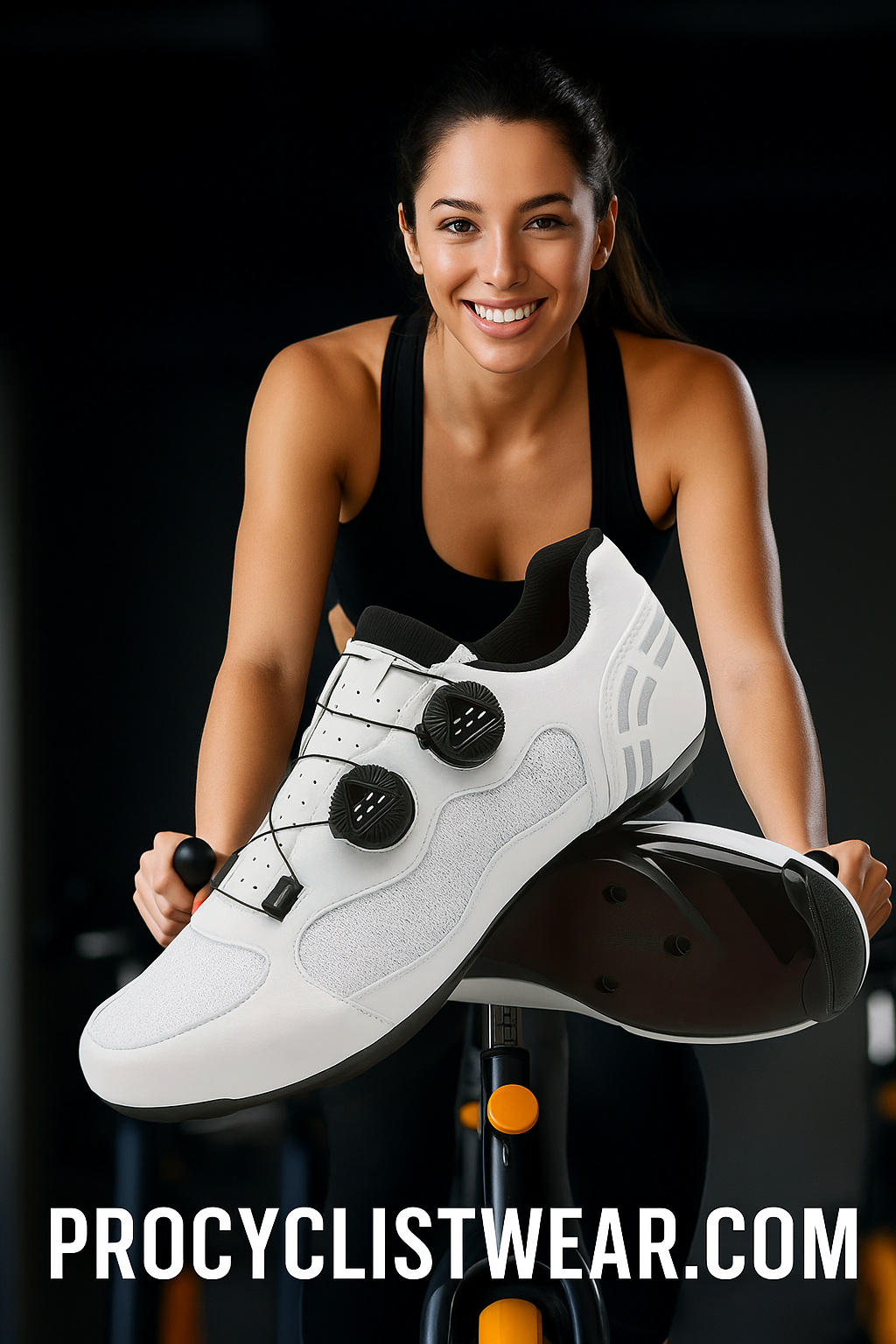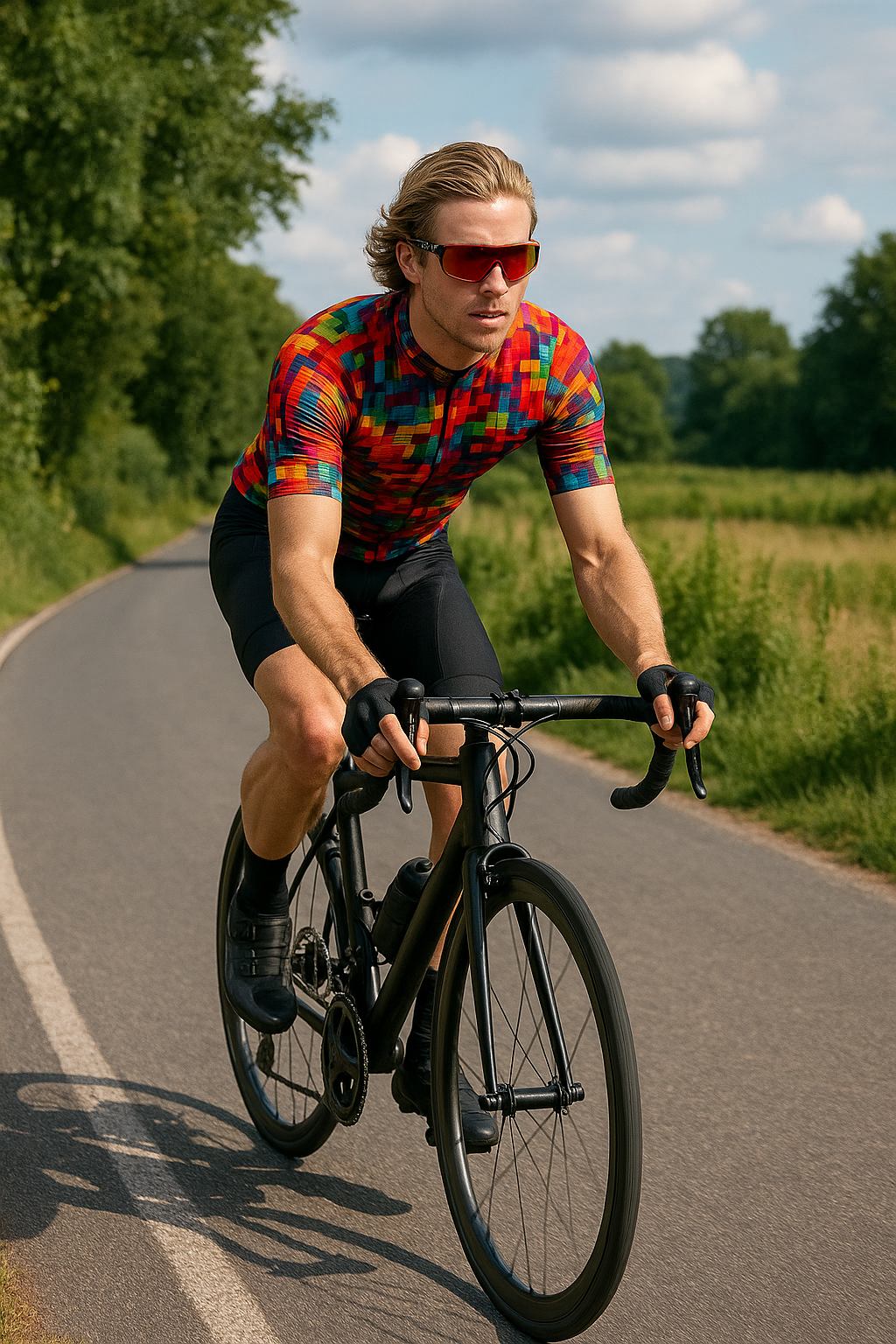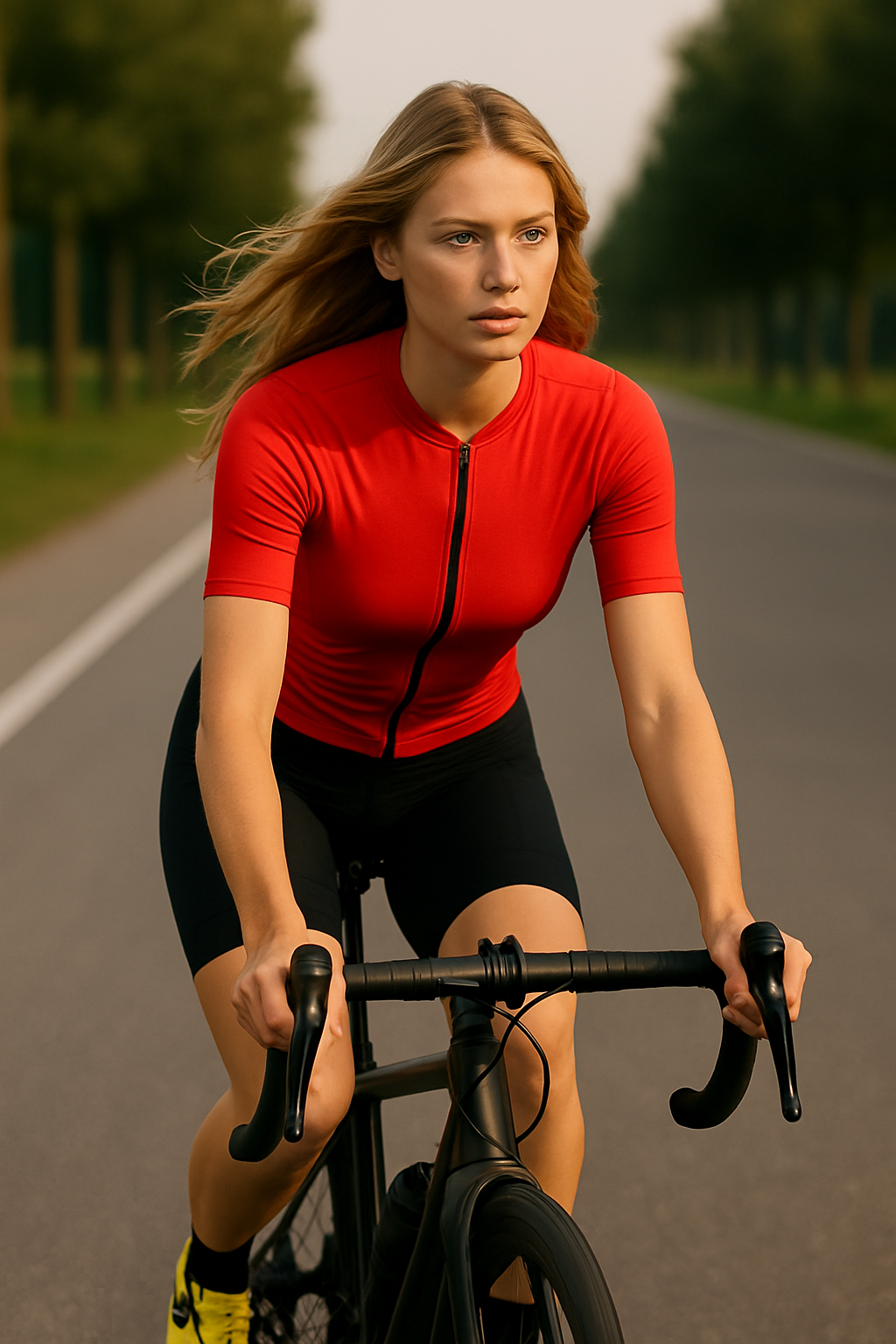Understand the Sole Purpose: What Cycling Shoes Do Differently
When you first hear about cycling shoes, you might think, “Aren’t regular sneakers enough?” That’s a fair question—and one every new cyclist asks. But here’s the deal: cycling shoes are designed for a very specific job, and once you clip in and feel the difference, there’s no going back. They’re not just part of the look—they’re part of the performance.
Why Your Feet Deserve Better Than Running Shoes
Imagine trying to hammer a nail with a sponge. That’s what pedaling in soft-soled shoes is like. Your power gets lost somewhere between your foot and the pedal. Cycling shoes fix that. They have stiff soles (usually plastic or carbon-reinforced), which means your energy goes straight into the crank with minimal waste. That extra push? It’s all you, baby.
Regular shoes bend and flex with every pedal stroke. Over time, this can actually make your feet sore and your ride inefficient. With cycling shoes, you get a solid platform that supports your foot and keeps your pedaling smooth and strong.
Let’s Talk About Stiffness (In a Good Way)
Sole stiffness might sound like a technical detail, but it’s a game-changer. A stiff sole helps prevent energy loss and improves your pedal stroke, especially during climbs or sprints. If you’re riding indoors, you may not need maximum stiffness—but if you plan to hit the open road, stiffer soles can give you that pro-level feel.
Carbon soles are the gold standard. They’re light, super rigid, and efficient. Entry-level cycling shoes often come with nylon soles, which are still much better than a regular running shoe. Either way, you’ll feel the upgrade instantly.
The Magic Connection: Cleats and Pedals
Here’s where things get next-level. Cycling shoes aren’t just about support—they’re about connection. Unlike your gym trainers, these shoes clip directly into your bike’s pedals using a cleat system. That clip-in feature means your feet stay locked in, giving you more control and allowing you to pull as well as push. Welcome to the world of efficient 360-degree pedaling.
Cleats come in a few different styles (more on that later in the SPD vs. Look section), but the important part is this: your shoes and pedals work as a team. It’s like dance shoes for your bike—secure, snug, and designed to move in sync with your body.
Why Cycling Shoes Belong in Your Gear Kit
Just like a good pair of cycling bibs or a breathable jersey, your cycling shoes are an essential part of your gear setup. They don’t just look sharp—they function as a key component of your performance. Whether you’re in the studio sweating through intervals or out on the road chasing distance goals, the right shoes will elevate every ride.
Besides performance benefits, they also improve comfort. Since your feet aren’t moving around inside your shoes, you reduce the chance of hotspots, numbness, or cramping. Bonus? You’ll feel more stable, balanced, and in control.
So, Do You Need Cycling Shoes?
If you’re serious about cycling—whether you’re aiming for race day or just want to get the most out of your workouts—then yes, cycling shoes are worth every penny. They’re not just gear; they’re your foundation. Once you get used to clipping in, you’ll wonder how you ever rode without them.
And no, you don’t have to be a pro. Many indoor riders and casual road cyclists make the switch to cycling shoes simply for the comfort, control, and power boost. It’s a small change with a big payoff.
Final Thoughts: It’s About the Ride, Not Just the Shoes
Cycling shoes may look intimidating at first, especially with all the talk of cleats, stiffness, and clips. But don’t overthink it. Start simple. Choose a pair that fits well, matches your riding style, and makes you feel like the cyclist you want to become.
As your cycling wardrobe grows with jerseys, bibs, and maybe even a sleek helmet, your shoes will always be the piece that grounds every ride—literally.
Need help picking your first pair? Check out the latest styles at ProCyclistWear.com/shop and take your ride to the next level.

Clip In or Stay Loose? SPD vs. Look Cleats Explained
Choosing cleats might feel like unlocking a secret cycling code—but don’t worry, it’s easier than it sounds. When you buy cycling shoes, you’ll quickly realize they need to connect with something—and that something is your pedal. That’s where cleat systems come in, and the two big players are SPD and Look. Let’s break it down in a way that actually makes sense.
What Exactly Are Cleats (And Why Should You Care)?
Cleats are those little metal or plastic attachments that screw into the bottom of your cycling shoes. They let you “clip in” to your bike pedals, turning your shoes into an extension of your bike. Sounds intense, but it’s actually awesome. Once clipped in, your foot won’t slip and you can pull up on the pedal as well as push down. That’s more efficiency, more control, and more power with less effort.
SPD Cleats: The All-Terrain, Walk-Friendly Hero
SPD stands for Shimano Pedaling Dynamics, but don’t let the name scare you—it’s basically the cleat system you’ll find on most spin bikes and mountain bikes. SPD cleats are small, metal, and recessed into the sole of your cycling shoes. That means you can actually walk around in them without sounding like a tap dancer at brunch.
If you’re planning to spend time in indoor cycling studios, SPD is your go-to system. You’ll clip in easily and walk out for coffee without doing a heel-toe shuffle. They’re also perfect if you want one pair of cycling shoes for commuting and training.
Look Cleats: Built for Road Warriors
Now, if you’re planning to hit the open road for miles and climbs, Look cleats may be a better fit. These cleats are larger and made from plastic, and they stick out from your shoes. The benefit? A larger surface area that distributes pressure more evenly. This means better energy transfer when you’re sprinting, climbing, or just out-riding your friends.
Look cleats are most commonly used in road cycling because they offer superior pedaling efficiency. But they’re not great for walking. You’ll definitely hear them click-clacking if you stop at a coffee shop mid-ride—just something to keep in mind.
Can’t Decide? Get the Best of Both Worlds
Here’s a pro tip that will make your cycling life way easier: Look for cycling shoes that support both SPD (2-bolt) and Look (3-bolt) cleats. This gives you the freedom to switch your cleats depending on where and how you ride. It’s like having a cycling wardrobe that works for both gym sessions and outdoor adventures.
Shoes with dual compatibility let you change things up as your cycling habits evolve. Maybe you start in spin class and catch the outdoor bug later. Having versatile shoes saves you from buying another pair too soon.
How to Spot the Difference When Shopping
Here’s the simple rule:
- SPD cleats = two bolt holes, small cleat, indoor-friendly.
- Look cleats = three bolt holes, wide cleat, road-focused.
When shopping for cycling shoes, always check the sole for bolt pattern compatibility. Most brands list it in the product details. At ProCyclistWear.com/shop, we make sure that’s easy to find, so you don’t end up with a cleat-shoe mismatch.
Which Cleat System Is Right for You?
It really depends on your riding style. If you’re riding mostly indoors or want to walk around comfortably, go with SPD. If you’re hitting the road and care most about power and performance, Look is your best bet.
And remember, both systems take a little practice to get used to. But once you’re clipped in, you’ll never want to go back. Just make sure your cycling shoes match the cleat system you choose, and you’re good to go.
Final Thoughts: Your Pedals, Your Rules
Choosing between SPD and Look cleats isn’t just about tech specs—it’s about how and where you ride. Your cycling shoes should feel like a natural part of your journey, not a daily dilemma. Pick what matches your goals, your gear, and your comfort level. And if you’re not sure yet? Get shoes with dual compatibility and explore both. That’s the beauty of cycling—it’s always your ride, your rules.
Need help finding the perfect shoes? Explore cleat-friendly models and beginner guides at ProCyclistWear.com/shop and pedal with confidence.

Fit Matters: How to Size Cycling Shoes the Smart Way
We’ve all been there—ordering shoes online, crossing fingers, and hoping they’re not too tight or sliding off our feet. With cycling shoes, getting the right fit matters even more. Not only for comfort but also for safety, power, and injury prevention.
Let’s walk—or rather, ride—through how to get the perfect fit for your cycling shoes so every pedal stroke feels just right.
Why Cycling Shoes Need a Precise Fit
Unlike your running shoes or casual trainers, cycling shoes don’t flex much. That’s intentional. Their stiff sole helps transfer energy directly to the pedals. But that also means if the fit is even a little off, you’ll feel it. Too tight? You’ll end up with numb toes. Too loose? You’ll lose power and possibly get blisters.
Think of your cycling shoes like a tailored jersey—they should hug your foot, not strangle it. You want a secure fit with just enough space for your toes to move slightly but without any heel lift. A snug fit ensures comfort during long rides and helps avoid hotspots, which are those painful pressure points that sneak up after an hour in the saddle.
How to Measure Your Foot for Cycling Shoes
The best way to get the right fit is to measure your feet at the end of the day when they’re slightly swollen—just like they’ll be after a ride. Stand on a sheet of paper, trace your foot, and measure the length from heel to toe and the width at the widest part. Then compare your measurements to the sizing chart of the brand you’re buying.
Pro tip: Try them on with the cycling socks you plan to wear. Thicker socks can change the fit more than you think. And always check the brand’s sizing notes—European brands sometimes run narrower or longer.
Dial, Strap, or Lace: What’s Right for You?
Once you’ve got the size down, it’s time to think about closure systems. Yes, the part that keeps your foot locked in matters, too. Most cycling shoes use one of three systems: dials, Velcro straps, or laces.
- Dial systems (like BOA) allow for precise adjustments on the fly. Tighten mid-ride? Easy.
- Velcro straps are simple, quick, and affordable.
- Laces offer a classic look and snug fit, but you’ll need to double-knot them to avoid mid-ride drama.
Your closure choice can affect how the shoe fits and feels during your ride. If your foot shape is tricky—say, wide at the front or narrow at the heel—look for shoes with multiple zones of adjustment.
Indoor vs. Outdoor Fit: Should It Be Different?
It might surprise you, but some riders prefer slightly looser cycling shoes for indoor rides. That’s because your feet tend to swell more during intense, sweaty sessions in hot studios. But if you’re training for road rides or planning long outdoor routes, aim for a closer, race-style fit for maximum efficiency.
Many cyclists even own two pairs: one tailored for studio comfort and another for performance rides. If you’re investing in just one pair, consider a breathable upper and adjustable fit system for maximum versatility.
When in Doubt, Size Up (Slightly)
If you’re between sizes, go for the slightly larger pair. You can always fine-tune the fit with insoles or tighter straps, but you can’t make a small shoe bigger. Just don’t overdo it—a shoe that’s too big can cause your foot to slide, especially during intense climbs or sprints.
Also, keep in mind that different brands fit differently. A size 41 in one brand might feel like a 42 in another. Always read reviews and look for sizing advice before clicking “add to cart.”
Final Thoughts: Fit Is the Foundation of Every Ride
Choosing the right fit for your cycling shoes can make or break your ride. If your feet are happy, your performance will follow. Take the time to measure, read the sizing chart, and don’t be afraid to try a few styles before you commit. After all, your cycling shoes are where every ride begins—literally.
Need help finding the right fit? Explore beginner-friendly and adjustable styles at ProCyclistWear.com/shop and find your perfect pair today.

Indoor vs. Outdoor Cycling Shoes: What’s the Real Difference?
Let’s face it—cycling shoes might all look pretty similar at first glance. But just like you wouldn’t wear a rain jacket to yoga, you wouldn’t wear the wrong shoes for the kind of ride you’re doing. Whether you’re heading to your favorite spin class or gearing up for weekend road miles, choosing the right type of cycling shoes is key.
Here’s what sets indoor and outdoor cycling shoes apart—and how to pick the pair that works best for your lifestyle and goals.
Indoor Cycling Shoes: Built for Breathability and Convenience
Indoor cycling shoes are all about comfort, airflow, and walkability. Most are designed with SPD cleat compatibility, which is the go-to system for spin bikes and many indoor cycling studios. These shoes usually have recessed cleats, making them easier to walk in—great for when you’re heading to the locker room or grabbing a smoothie post-ride.
They often feature mesh panels or ventilated uppers, helping to keep your feet cool when studio temps heat up. Plus, many indoor-focused designs are lighter and a bit more flexible, which is ideal when you’re doing short, high-intensity workouts.
If your routine includes regular indoor classes, look for cycling shoes that are breathable, easy to get on and off, and compatible with your studio’s pedals. And don’t worry—breathable doesn’t mean boring. Stylish indoor shoes are trending hard in the pro cycling apparel world.
Outdoor Cycling Shoes: Designed for Power and Protection
Outdoor cycling shoes are built for performance and durability. Think long rides, steep climbs, and changing terrain. These shoes typically work with Look cleats or SPD-SL systems, which are mounted on the surface of the sole and offer a wider platform for maximum power transfer.
The soles on outdoor shoes are much stiffer than indoor versions. That stiffness helps you transfer every bit of energy to the pedal—something you’ll appreciate during tough climbs or sprint finishes. They’re also designed to hold up against the elements, with water-resistant materials and reinforced construction.
While they’re harder to walk in, outdoor cycling shoes deliver unbeatable efficiency on the bike. Just plan your café stops accordingly—you’ll sound like you’re tap-dancing when you walk inside.
Hybrid Options: Best of Both Worlds
Not ready to commit to just one type? Good news—some cycling shoes are versatile enough for both indoor and outdoor riding. These hybrid shoes usually support dual cleat systems, meaning they’re compatible with both SPD and Look-style cleats. This is a great option if you like to switch between studio sessions and weekend road rides.
Look for shoes with medium-stiff soles, breathable uppers, and dual-bolt/three-bolt cleat mounting holes. It’s like having two pairs in one, and it saves you space, money, and time.
So… Which Cycling Shoes Should You Choose?
It all comes down to your riding habits:
- Do you ride indoors 90% of the time? Go with lightweight, SPD-compatible indoor cycling shoes.
- Do you love the open road and performance gains? Choose stiff, road-ready shoes with Look cleat support.
- Do you mix it up and want the flexibility to do both? Opt for a hybrid shoe with dual cleat compatibility.
No matter what you pick, just make sure your cycling shoes match your goals, your bike setup, and your personal style. After all, you want to feel good and look good while riding—whether you’re under disco lights or the sun.
Final Thoughts: Match Your Shoes to Your Ride
Choosing between indoor and outdoor cycling shoes isn’t just about cleats—it’s about getting the most out of every ride. Your gear should support your effort, and that starts at your feet. Whether you’re sweating it out on a stationary bike or chasing hills outside, there’s a perfect shoe waiting for you.
Need help picking the right pair? Browse our versatile and performance-ready options at ProCyclistWear.com/shop and step into your next ride with confidence.

Ready to find the pair that fits your ride—and your mindset?
At ProCyclistWear, our cycling shoes are crafted not just for performance, but for the rider you’re becoming. Every stitch, strap, and sole is designed to empower your movement while elevating your style. These aren’t just shoes; they’re a reflection of your commitment, your energy, and your pursuit of something greater—on and off the bike. Whether you’re chasing goals in the studio or pushing boundaries on the open road, choosing ProCyclistWear means choosing gear that meets your ambition. Ride stronger, ride smarter, and above all—ride like you mean it.




